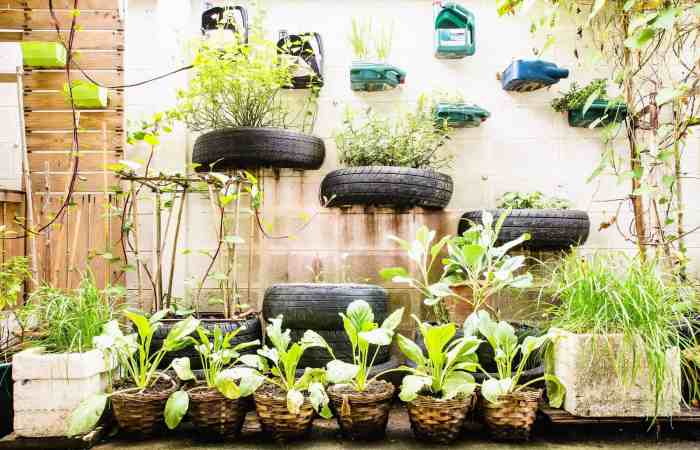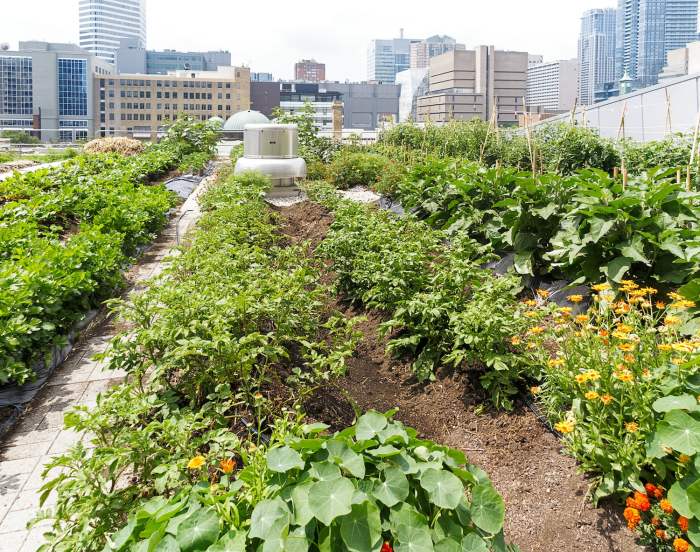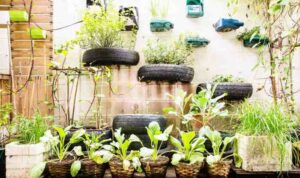Urban gardening is not just a trend, it’s a lifestyle that brings greenery into the concrete jungle. From rooftop gardens to community plots, explore the world of urban gardening and how it’s transforming city landscapes.
Delve into the essential tools, best plants, sustainable practices, and more to kickstart your urban garden adventure. Let’s dig in!
Introduction to Urban Gardening
Urban gardening refers to the practice of growing plants, vegetables, and fruits in urban areas such as cities and towns. It is a significant movement that aims to utilize available spaces in urban environments for cultivating greenery and promoting sustainability.
Urban gardening offers numerous benefits for both individuals and communities. For individuals, it provides access to fresh and organic produce, promotes physical activity, and enhances mental well-being through gardening activities. In terms of communities, urban gardening fosters social connections, improves local food security, and contributes to environmental conservation by reducing carbon footprint.
However, urban gardening also presents challenges and limitations compared to traditional gardening in rural areas. Limited space, soil quality issues, and potential exposure to pollution are common obstacles faced by urban gardeners. Additionally, access to resources and knowledge about sustainable gardening practices may be more restricted in urban settings.
Resource Management in Urban Gardening
Urban gardening requires efficient resource management to overcome space limitations and ensure the success of plants. Key aspects of resource management include water conservation, soil health maintenance, and utilization of vertical gardening techniques to maximize space usage.
Types of Urban Gardens
Urban gardens come in various forms, each with its unique features and requirements. Let’s explore different types of urban gardens and successful projects from around the world.
Rooftop Gardens
Rooftop gardens are gardens created on the rooftops of buildings. They make use of underutilized space in urban areas and provide a green oasis amidst concrete jungles. These gardens require special attention to structural integrity, water drainage, and weight limitations. Successful examples include the Brooklyn Grange in New York City and the Kensington Roof Gardens in London.
Community Gardens
Community gardens are shared spaces where individuals come together to grow fruits, vegetables, and flowers. These gardens promote community bonding, food security, and environmental sustainability. They often require collaboration among members for maintenance and organization. Successful examples include the P-Patch Community Gardens in Seattle and the Ron Finley Project in Los Angeles.
Indoor Gardens
Indoor gardens are gardens grown inside buildings, such as homes, offices, or schools. They allow people to grow plants year-round regardless of the outdoor climate. Indoor gardens require proper lighting, ventilation, and humidity control. Successful examples include the Plant Chicago indoor garden in Illinois and the Underground Farmers indoor garden in Tokyo.
Essential Tools and Supplies for Urban Gardening

When it comes to urban gardening, having the right tools and supplies can make all the difference in the success of your garden. While you may not have acres of land to work with, you can still create a thriving garden in your urban space with the proper tools and supplies.
Necessary Tools and Supplies
- Containers or pots: Since space is limited in urban settings, using containers or pots is essential for planting your garden. Choose containers that are the right size for the plants you want to grow.
- Hand trowel and pruners: These tools are necessary for planting, weeding, and pruning your plants. Make sure to invest in quality tools that will last.
- Watering can or hose: Proper watering is crucial for the health of your plants. Make sure you have a watering can or hose to keep your garden hydrated.
- Organic soil and fertilizer: Urban soil may not be the best quality, so it’s important to use organic soil and fertilizer to give your plants the nutrients they need to thrive.
- Seeds or seedlings: Whether you choose to start from seeds or seedlings, having the right plants to grow in your garden is essential.
Urban Gardening vs. Traditional Gardening Tools
In urban gardening, the focus is on making the most of limited space, so tools like containers, hand trowels, and pruners are more important than larger tools like shovels and rakes typically used in traditional gardening. Urban gardening also requires more attention to watering and soil quality, as urban environments can present unique challenges for plant growth.
Maximizing Small Spaces in Urban Gardening
To make the most of small spaces in urban gardening, consider vertical gardening techniques such as trellises or hanging planters. Utilize windowsills, balconies, and rooftops to expand your gardening space. Choose compact plant varieties and plant in succession to maximize your harvest throughout the growing season.
Best Plants for Urban Gardening

Urban gardening can be challenging due to limited space and sunlight, so choosing the right plants is crucial for success. By selecting plant species that thrive in urban environments, beginner gardeners can set themselves up for a rewarding gardening experience.
1. Herbs
- Basil
- Parsley
- Mint
2. Succulents
- Aloe Vera
- Sedum
- Jade Plant
3. Tomatoes
- Cherry Tomatoes
- Roma Tomatoes
- Heirloom Varieties
Sustainable Practices in Urban Gardening
Urban gardening can be made even more eco-friendly by incorporating sustainable practices. These practices not only benefit the environment but also contribute to the overall health and productivity of your garden.
Composting
Composting is a great way to recycle organic waste and create nutrient-rich soil for your plants. By composting kitchen scraps, yard waste, and other organic materials, you can reduce landfill waste and improve soil quality naturally.
Rainwater Harvesting
Rainwater harvesting involves collecting rainwater in barrels or tanks to use for watering your garden. This practice helps conserve water and reduces the strain on local water resources. Plus, rainwater is free of chlorine and other chemicals found in tap water, making it better for your plants.
Natural Pest Control
Instead of using chemical pesticides, consider using natural pest control methods in your urban garden. This can include planting companion plants that repel pests, introducing beneficial insects, or using homemade pest deterrents like garlic spray. These methods are safer for the environment and your health.
Food Sovereignty and Local Food Production, Urban gardening
Urban gardening plays a crucial role in promoting food sovereignty by empowering individuals and communities to grow their own food. By growing fruits, vegetables, and herbs locally, urban gardeners reduce their dependence on imported produce and support sustainable food systems.
Recycling Materials for Urban Gardening
Innovative urban gardeners find creative ways to recycle materials for their gardening projects. From using old containers as planters to repurposing pallets for raised beds, there are endless possibilities for upcycling materials in urban gardening. Not only does this reduce waste, but it also adds a unique touch to your garden design.
